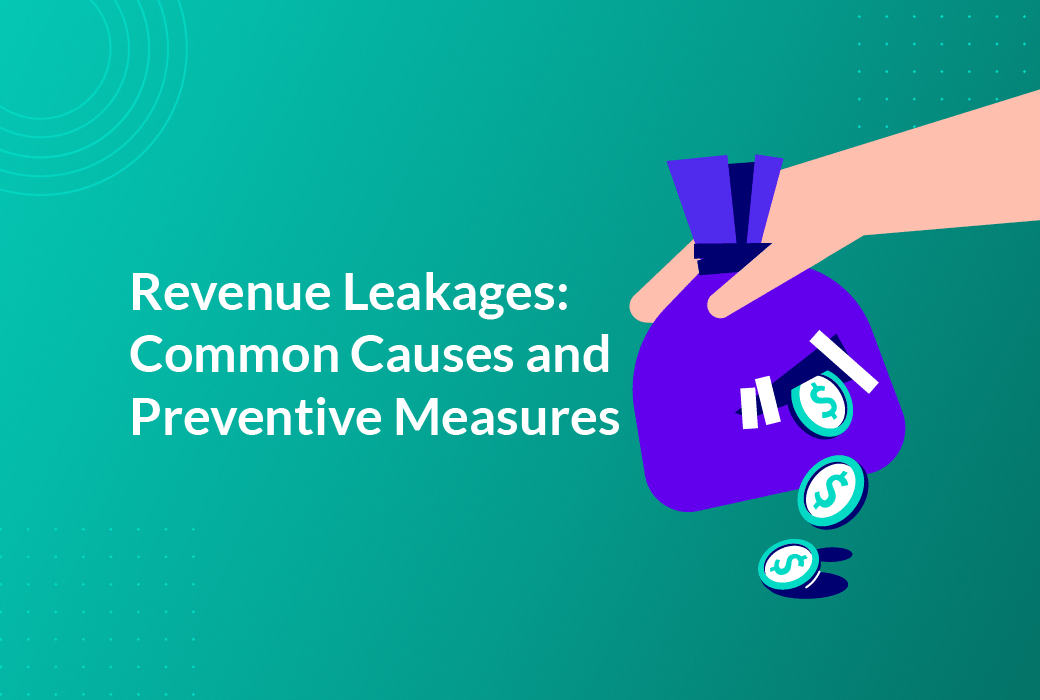
Watching your potential profits slip through the cracks? It’s time to plug the leaks and stop expense leakage in your company. Let’s explore the various causes of revenue leakage and learn practical strategies to prevent it from happening.
What is Revenue Leakage?
Revenue leakage is potential revenue loss due to inefficiencies or errors in a company’s sales or billing processes. Therefore, identifying and addressing revenue leakage is an important aspect of maintaining a healthy financial performance for a business.
Common Causes of Revenue Leakages
| Causes | Explanation |
| When a company does not collect all the revenue it is entitled to | This can happen for various reasons, including incorrect pricing, billing errors, overstating deductions, underreporting sales, or failing to enforce contracts properly. |
| Poorly managed billing processes | It can cause revenue leakage and manual errors like incorrect tax calculations or customer data. |
| Inaccurate pricing | This can also be a cause which happens when a company fails to review prices regularly or update prices to reflect market changes. |
| When customers don’t pay on time or in full | This can happen when payment terms are not enforced, or customers can pay late without penalty. |
| Company fails to enforce its contracts and terms of service | For example, if a company does not follow up on the usage of services, it may leave money on the table. |
| Poor inventory tracking | If a company does not track inventory and sales accurately, it can lead to inaccurate accounting and billing, resulting in lost revenue. |
7 Ways to Prevent Revenue Leakages in Companies
Below are some necessary steps to prevent revenue leakage that can help ensure your business remains on the right track and maintains a steady revenue stream.
Leverage Automated Expense Management Tools
Automated expense management tools allow you to manage expenses automatically without much human effort. When you can control your employees’ spending through an app on your phone, it reduces the administrative burden and helps you spend more time streamlining your revenue.
Implement Internal Controls
Companies should implement internal controls to prevent revenue leakage. These controls should include segregation of duties, regular reviews of financial records, and properly documented procedures for all financial transactions.
Use Automated Bookkeeping Solutions
It is crucial to monitor all transactions and reconcile accounts regularly to record all income and expenses accurately. In addition, it is also important to ensure that all transactions are properly authorised and recorded in the books.
Manually entering all accounting entries could be a cumbersome task. Hence, using an automated bookkeeping solution could be at your rescue. It will help you auto-categorise your expenses and arrange them in order.
Utilise Audits & Internal Reviews
Auditing helps to ensure that a company’s revenue is accurate and properly accounted for, and internal reviews can help to identify areas where revenue may be leaking.
When conducting an audit or internal review, a company should look for discrepancies between actual and reported revenue. This includes looking for discrepancies between invoices, sales receipts, and other financial documents.
Additionally, they should look for discrepancies between the revenue reported to the company and the revenue reported to the government.
The company should also look for areas where revenue is being misallocated or misreported. This could include looking at the accounts receivable and accounts payable, inventory and purchasing, and cost of goods sold.
Also, reviewing any discounts or special pricing that may be offered to customers is important, as this can lead to revenue leakage.
Establish Proper Authorisation and Documentation
Establishing proper authorisation and documentation means setting up a system that requires approval from an authorised individual before any financial transaction is approved. This also involves having the proper documentation for all transactions, such as receipts, invoices, and other forms.
Track and Analyse Revenue Streams
The next crucial way is to identify and track your revenue streams. This includes tracking sales and revenue from all sources, such as online and offline purchases and subscriptions. You should also track data points such as customer information and payment methods.
Once you have tracked your revenue streams, it’s important to analyse the data to identify patterns or trends. This can help you identify areas where there may be potential for revenue leakage.
For example, notice that customers pay with a particular payment method more often than others. It may indicate that customers are not being redirected to the correct payment page or that there is an issue with the payment gateway.
Invest in Employee Training
Companies should invest in employee training to ensure everyone understands their roles and responsibilities to prevent revenue leakage. In addition, employees should be trained on the policies and procedures related to financial transactions and be made aware of the risks and consequences associated with revenue leakage.
The Bottomline
In a nutshell, revenue leakage can significantly drain a company’s bottom line. Remember, plugging the leaks is crucial to ensure that your company stays afloat and continues to thrive. With the right tools and strategies, you can prevent expense leakage and keep your company’s finances on track.













